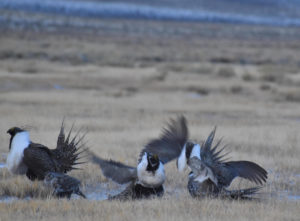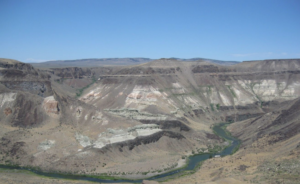by Dr. Mike Connor, WWP California

The BLM has been accepting applications for the
construction of power plants on vast tracts of public land in the sunny deserts of the southwest. “First dibs” applications have been submitted for over 120 solar and wind energy plants on over a million acres of public land in the California Desert Conservation Area alone. Hundreds of thousands of acres of our precious public lands could be bulldozed flat to provide “renewable energy” power plant sites. Most of these power plants proposals have been filed as “right-of-way” applications, an ad hoc process that fails to take a broad look at the natural resources of our public lands and fails to direct development to areas of low resource value.
One such project is the Ivanpah Solar Electricity Generating Plant. The six square mile power plant would dominate the North Ivanpah Valley near the California-Nevada border. This desert area is familiar to anyone who has traveled along Interstate 15 between California and Las Vegas as the area to the north where Interstate crosses the dry lake near the border. It provides habitat for an important population of desert tortoises, is used by bighorn sheep and other wildlife, is home to a number of rare plants, and has an assemblage of barrel cactus unrivaled elsewhere in the Golden State.

The Ivanpah Valley is the only place in California where Northeastern Mojave desert tortoises occur. These tortoises are the most genetically distinct of the California populations. The Ivanpah power plant would severely impact this population and as such poses a threat to the entire listed population. This power plant uses a novel technology that has never been deployed on this scale before. This is entirely the wrong place to build a massive, experimental power plant.
There are alternatives to this project. Photovoltaic technology is improving in leaps and bounds making roof top solar options much more efficient and cost effective. There are degraded private lands where projects could be built. The environmental review for the Ivanpah power plant was rushed propelled by $1.4 billion of stimulus funding (i.e. taxpayers’ money) that will be made available if the project is shovel ready by fall 2010. Western Watersheds Project has intervened in the licensing process and is keeping a close watch on this poorly located project.
The BLM and state agencies in California have both embarked on planning efforts to guide placement of new power plants. Good planning should ensure that any needed energy plants are located on degraded lands and do not lead to further degradation of our fragile deserts. Since the agencies don’t exactly have a stellar record in the planning arena, Western Watersheds Project is keeping a close watch on these processes too.
Dr. Michael J. Conner is WWP’s California Director. He lives in Reseda, CA
This article appeared in the Watersheds Messenger – Spring 2010 – (Vol. XVII, No. 1)![]()
 Check out WWP’s archive of our semi-annual publication, the Watersheds Messenger
Check out WWP’s archive of our semi-annual publication, the Watersheds Messenger





